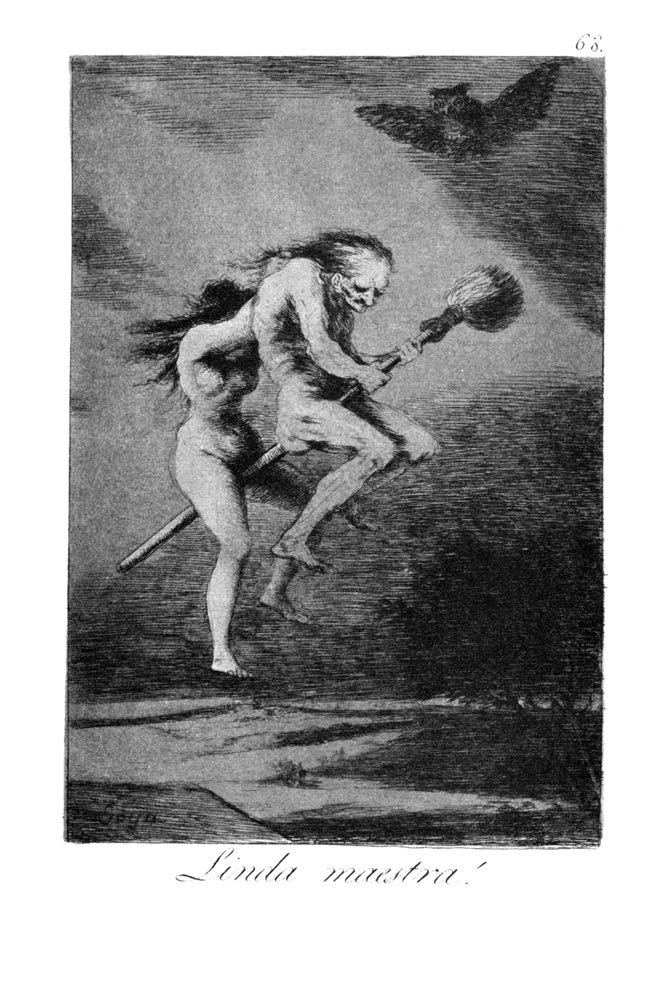 | ||
Flying ointment, also known as witches' flying ointment, green ointment, magic salve and lycanthropic ointment, is a hallucinogenic ointment said to be used by witches in the Early Modern period.
Contents
Composition
The ointment contains a fatty base and various herbal extracts, usually including solanaceous herbs that contain the alkaloids atropine, hyoscyamine and scopolamine. The herbs' essential oils are extracted when heated in the base. These oils are poisonous when ingested; when applied to the skin, the alkaloids are absorbed more slowly into the body. Typical ingredients in alleged recipes include hemlock (Conium spp.), deadly nightshade (Atropa belladonna), wolfsbane (Aconitum spp.), and henbane (Hyoscyamus niger), usually in a base of animal fat.
It was said that witches were able to fly to the Sabbath on their brooms with help of the ointment.
Some sources (such as The Botany of Desire) have claimed that the ointment is absorbed best through mucous membranes, and that it was possibly applied to a special dildo that was inserted in the vagina.
One possible key to how individuals dealt with the toxicity of the nightshades usually said to be part of flying ointments is through the antidotal reaction some of the solanaceous alkaloids have with the alkaloids of Papaver somniferum (opium poppy). This is discussed by Alexander Kuklin in his brief book, How Do Witches Fly? (DNA Press, 1999). This antagonism was utilized by the movement of Eclectic medicine. For instance, King's American Dispensatory states in the entry on belladonna: "Belladonna and opium appear to exert antagonistic influences, especially as regards their action on the brain, the spinal cord, and heart; they have consequently been recommended and employed as antidotes to each other in cases of poisoning; this matter is now positively and satisfactorily settled; hence in all cases of poisoning by belladonna the great remedy is morphine, and its use may be guided by the degree of pupillary contraction it occasions."
The interaction between belladonna and poppy was made use of in the so-called "twilight sleep" that was provided for women during childbirth beginning in the Edwardian era. Twilight sleep was a mixture of scopolamine, a belladonna alkaloid, and morphine, a Papaver alkaloid, that was injected and which furnished a combination of painkilling and amnesia for a woman in labor. A version is still manufactured for use as the injectable compound Omnopon.
There is no definite indication of the proportions of solanaceous herbs vs. poppy used in flying ointments, and most historical recipes for flying ointment do not include poppy.
